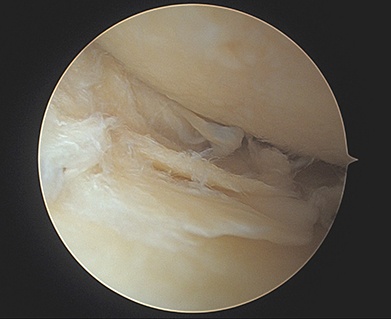Author: Reed Butler, MD
Published on: 7/14/2023
We as physicians want to encourage our patients to live healthy, active lifestyles. Particularly, as orthopedic surgeons, we commonly see patients with musculoskeletal complaints that are limiting their ability to perform their jobs or participate in recreational sports or hobbies that they enjoy. One pathology in particular that we want to highlight here is meniscal tears in older patients that occur without any recent trauma.
Knee arthroscopy is commonly used to treat certain meniscal tears. During a knee arthroscopy, a camera and shaver is placed into the knee joint through two small poke holes to trim up the torn meniscus. This is one of the most commonly performed orthopedic surgeries across the world. However, just because you have a meniscal tear doesn’t necessarily mean you need surgery.
A study known as the “ESCAPE trial” published in the Journal of American Medical Association in 2018 showed that patients aged 45-70 with degenerative meniscal tears who underwent physical therapy alone versus those that underwent arthroscopic partial meniscectomy did not differ significantly in terms of knee pain and function at 2 years follow up. At the 5 year mark, they still did not find any significant differences in pain or function, nor did they see any difference between the two groups in progression of osteoarthritis.
This study has influenced our approach to the treatment of degenerative meniscal tears. In general, we encourage our patients to attempt non-operative treatment first, including exercise based physical therapy, as well as anti-inflammatories and injections (corticosteroids, hyaluronic acid, or platelet rich plasma) before jumping to surgery. That being said, there are certain cases where surgery is indicated from the start, such as in the case of large, obstructive meniscal tears where a piece of the meniscus may be flipped and mechanically blocks the knee from being able to go through the normal arc of motion. Figure 1 demonstrates a degenerative meniscal tear that was causing the patient mechanical symptoms. The patient underwent a knee scope to clean out the meniscus and Figure 2 shows the meniscus after debridement. The patient obtained significant relief.

Figure 1 Degenerative Meniscus

Figure 2 Degenerative Meniscus Debrided
What does this mean for your knee? Well, to begin with, surgery itself is not a cure-all for degenerative knees. Osteoarthritis is a term we commonly use, and it refers to age related wear to the cartilaginous surface of the joint. We cannot reverse or cure your osteoarthritis, but we may be able to slow its progression and manage your symptoms. During arthroscopy, our goal is clean out the knee joint by trimming up torn pieces of the meniscus, removing any loose bodies, and smoothing out rough areas of cartilage. This will not give you a new knee, but many patients do report symptomatic improvement. The goal of physical therapy on the other hand is to strengthen the muscles around the knee to make the knee more stable and better able to deal with the daily stress you place upon it. This can help slow the progression of arthritis and increase your activity tolerance.
In summary, if you are experiencing knee pain and feel you may have torn your meniscus, find an orthopedic surgeon near you to receive evidence based answers. The surgeon will order x-rays and likely an MRI to further understand the pathology inside of your knee. In general, the more severe your arthritis is in your knee, the less likely a knee arthroscopy will provide long term relief. If physical therapy is recommended, keep in mind that the benefits of physical therapy are directly related to the effort you put in, and that your doctor is trying to save you from a potentially unnecessary surgery. Injections can be useful adjuncts to physical therapy. Ultimately, if you end up having surgery, maintain realistic expectations with yourself and your doctor.







